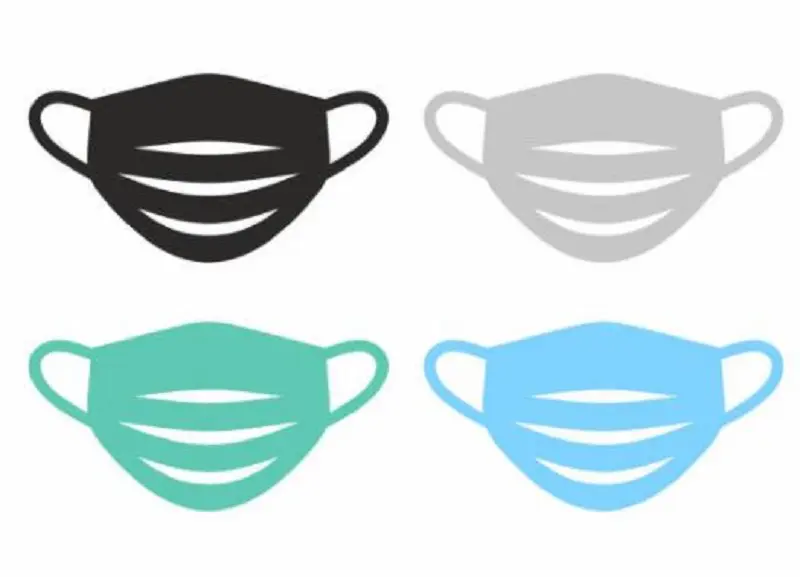Can I clean and reuse my mask? How should I store my mask? Read on to learn more about how to store and reuse your mask.
The Centre for Disease Control has been on the forefront urging people to wear face coverings to slow down the spread of COVID-19. This has caused an increase in demand for face coverings leading to their limited supply.
This article explores the Dos and Don'ts as regards to the storage and reuse of masks:
There is no absolute number of masks that you should have at a given time. It all depends on who you are and what you are doing. You can also wear a mask for as long as you wish. There is no defined timeframe within which you should use your mask. But it is still advisable that you should always have a backup mask with you just in case a change is needed.

Most face coverings are intended for single use. This means they should be used only once. In the wake of the COVID-19 pandemic, this has not been practical. There is a limited supply of both N95 respirators and medical masks thus the need to disinfect, store and reuse them. To reuse a mask, you will need to decontaminate it. You will also need to carefully take care of your mask.
The Center for Disease Control has provided guidelines on how to put on, take off and dispose face masks. The CDC recommended the wearing of facemasks to slow down the extent of spread of the COVID-19 disease.
The Dos and Don'ts for face masks start with choosing the mask to wear. The mask you are wearing may either protect you from others or protect others from you. The CDC recommends that you wear a mask that has at least two layers of breathable fabric. Masks made from material which make it hard to breathe e.g. Vinyl should not be worn. You should not see light between the fabrics when you hold the mask up the sun.

In an interview with , Dr. Ole Vielemeyer, opines that when worn properly( that it completely covers your face and mouth) a face mask reduces the risk of getting sick via contaminated airborne droplets.
Unless you are a healthcare service provider, you are advised against using N95 respirators and surgical masks. These face coverings have a high filtration efficiency and therefore are best reserved for those in high risk environments. For example, those in direct contact with confirmed or suspected COVID-19 positive patients.
Masks with exhalation valves allow droplets and liquids to escape. Such masks are not effective against SARS-CoV-2 virus, the novel coronavirus that causes COVID-19. They should not be worn when there is a high risk of exposure to the SARS-CoV-2 virus.
The Center for Disease Control also advises against children below the age of two years putting on face masks. According to the guidelines provided by the CDC, children should only wear face masks that are specifically designed for them.
In the special circumstance that you wear glasses, you should choose a mask that fits closely over your nose.
The World Health Organization and other medical agencies such as the CDC, recommend a single use of face masks. This is, however, not practical under the current circumstances where demand has overwhelmed supply. People are forced to clean and reuse face masks as the supply is limited.
In this article, it is stated that there are three definitions of reuse as provided by the US Food and Drug Administration. In the first definition, reuse can be between patients e.g. the use of an endoscope. Secondly, it can be by the same person with proper processing and disinfection as is the case with contact lenses. Lastly, reuse can be the repeated use by the same person with or without processing.
Simply put, reuse of respirators is the practice where a respirator is used for couple of encounters with patients but replaced after each encounter. Extended use is the best available option for reuse of respirators. Extended use involves maintaining the fit and function of respirators. The respirator is only disposed off after it is damaged or it becomes unbreathable.
Surgical masks are single use masks and have to be replaced as soon as they are damp. Unlike N95 respirators and cloth masks, they can't be reused.
The method chosen for decontamination of respirators should be easily available and shouldnot leave residual harmful chemicals on the material of the respirator. The fit of the respirator needs to be maintained after decontamination: it should come out as good as new. Lastly the method ought to be effective against the target organism, in this case the SARS-CoV-2 virus. All these guidelines on the choice of a decontamination method are provided by the CDC.
The N95 respirators should be not be washed with soapy water or sprayed with liquid alcohol. These cleaning methods interfere with how the N95 respirator filters micro droplets by breaking down its inherent electrostatic charge.
There are 3 recommended methods that can be used to disinfect N95 respirators. N95 respirators can be cleaned by use of: UV lighting, moist heat and dry heat. All these methods meet the criteria spelt out above.

Dry heat can be used to clean masks at home. It is easily available as the dry heat can be generated by domestic heating appliances such as ovens and rice cookers. UV lighting is more suited for health care workers found in rural areas. It only requires that there are no particles such as cosmetics present on the surface to be cleaned. Lastly, moist heat gets rid of bacteria and the novel coronavirus but does not interfere with the fit of the respirator.
In the guidelines provided by the Alabama Public Health department, healthcare service providers are asked to use their masks throughout each shift and reuse them each day. This is in an effort to conserve masks.
Masks should not be removed while still in the patient care area. After removing the mask, hold it in a way that brings the outer surface inward. This reduces contact with the outer surface while in storage. The mask is then stored in a clean sealable paper bag or a breathable container.

